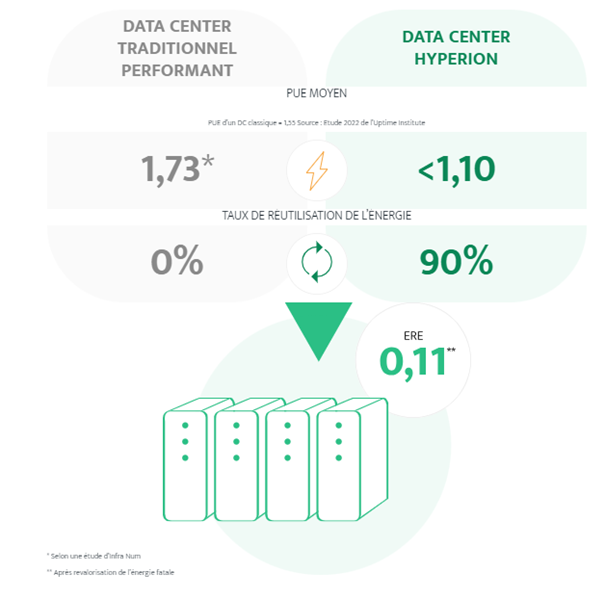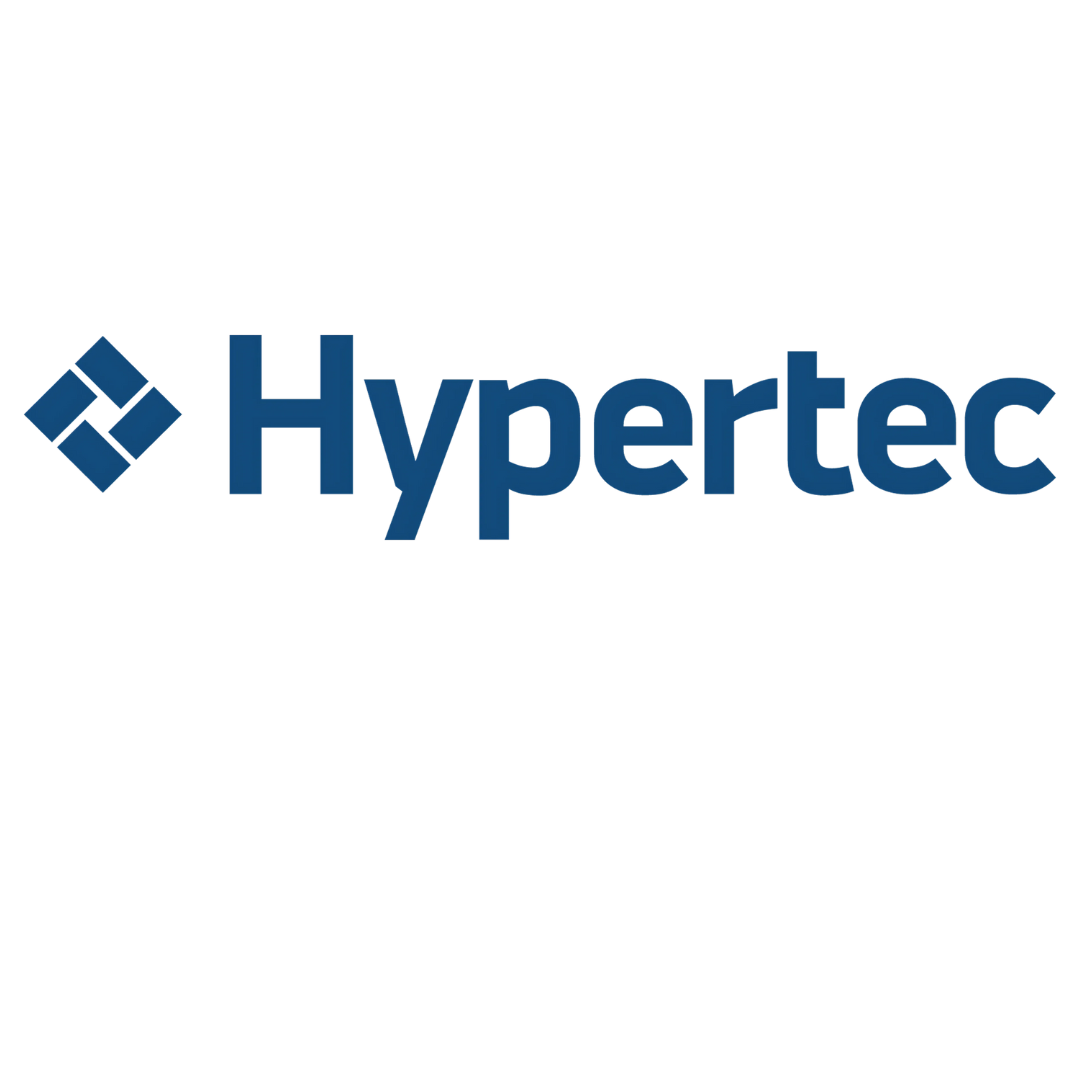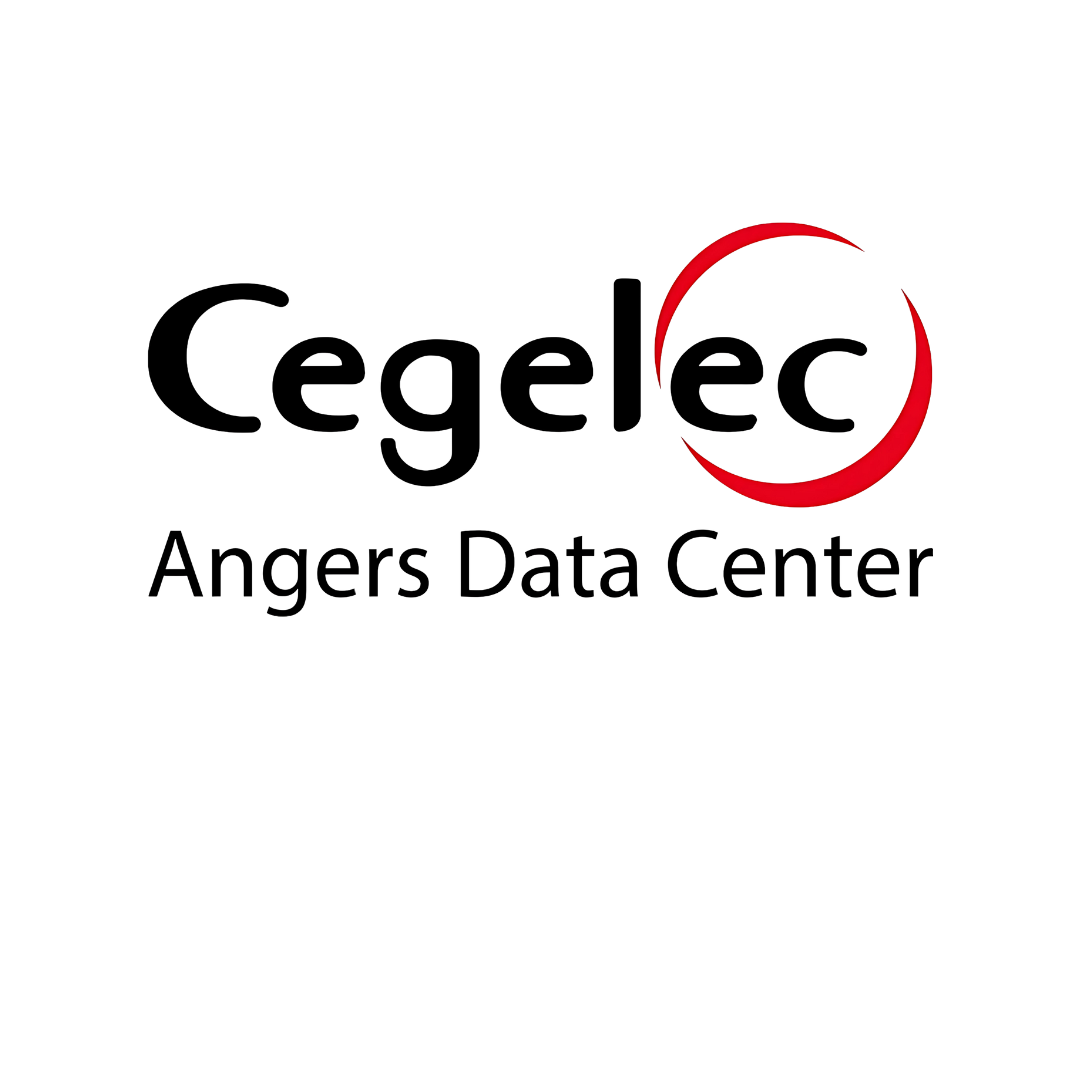PUE: What is it?
Nowadays, companies face seemingly contradictory challenges: they must both develop their information systems and reduce their ecological footprint, which means lowering the energy consumption of their facilities. However, solutions have been developed to achieve these two objectives simultaneously. Technical indicators are used to help companies act in favor of sustainable development without compromising the efficiency and productivity of their IT infrastructure. One of the most emblematic indicators in this regard is the PUE: Power Usage Effectiveness. Its role? To assess the energy efficiency of a data center.
PUE, the industry standard indicator
As mentioned earlier, PUE measures the efficiency of a data center by establishing a ratio between the total energy used by the data center and the energy consumed solely by the IT equipment.
PUE varies depending on various factors, such as the design of the data center, its occupancy rate, and weather conditions. The majority of the energy used in a data center is dedicated to cooling the server rooms, but PUE also takes into account other aspects such as power supply, lighting, monitoring, and security.
Examples of PUE
It is difficult to realize the energy requirements related to cooling IT infrastructures. For example, a 1000 m² server room in a data center can consume around 2 MW.
Currently, many data centers display a PUE of around 1.7 (source: Ademe), meaning that 1.4 MW (3.4 MWh consumed for 2 MWh used) are used for cooling and other needs. Although PUE tends to decrease, cooling remains the main energy consumer in a data center, significantly contributing to digital pollution.e.
Our Hyperion solution, on the other hand, displays a PUE d< 1.1 throughout the year and across all latitudes.

Should we choose between data center availability and PUE?
When IT equipment is hosted in a data center, the facility must have a complex infrastructure to ensure the maximum availability of this equipment. Tier 4 data centers offer a statistical availability of 99.995%, which is preferred to meet the growing needs of enterprise computing.
However, Tier 4 data centers require a more substantial infrastructure, which naturally increases the PUE. It is easier to achieve a good PUE with a lower Tier level, but that is not enough. Companies should not only focus on the PUE but also on the Tier level and the statistical availability of the site.
How to optimize and reduce the PUE
Reducing the PUE of a data center is essential for lowering costs and minimizing environmental impact. Several solutions can be considered, including:
- Increase the operating temperature of the servers.
- Reduce the power density per square meter.
- Improve the circulation of fresh air in the server rooms.
- Optimize the production of fresh air by using heat exchangers.
- Explore suitable geographic locations, such as cold regions, to reduce the need for cooling.
- Use Hyperion technology: https://hyperion.green/performances-energetiques/ based on immersion cooling.
Conclusion: Is the PuE the ultimate solution?
In summary, data centers house the IT and telecommunications equipment of a company. By managing numerous servers, these facilities consume a significant amount of electricity and generate considerable heat. To prevent overheating in the confined space of a data center, it is essential to install an efficient cooling system like Hyperion.
However, did you know that PuE only measures the waste at the input of the data center? Whereas Hyperion not only reduces this waste but also allows for the recovery of 90% of the energy used by the data center! Fortunately, there are other, more comprehensive indicators to account for this dimension, such as ERE: Energy Reuse Effectiveness.
Learn more here in this upcoming article about ERE and heat recovery with Hyperion.









